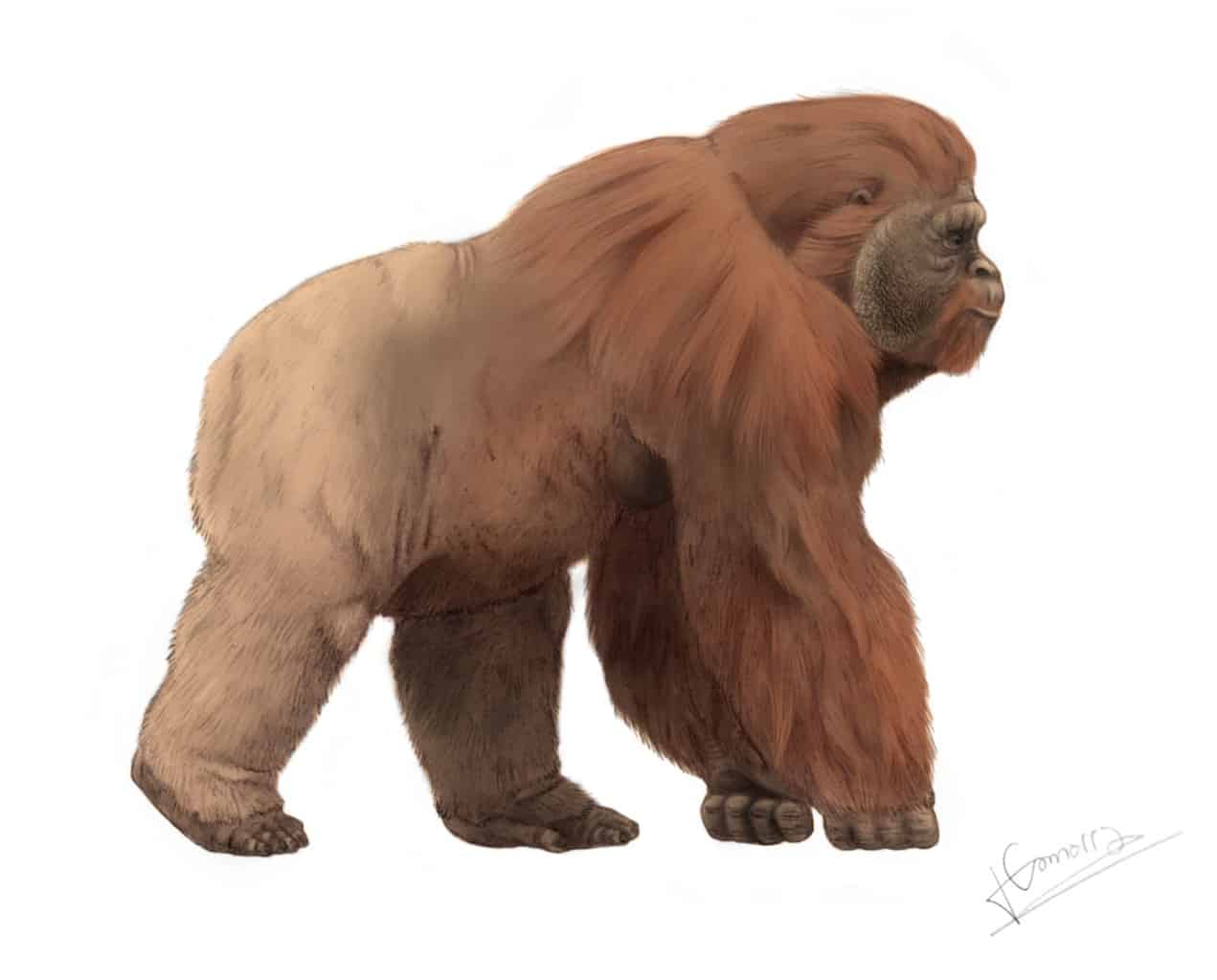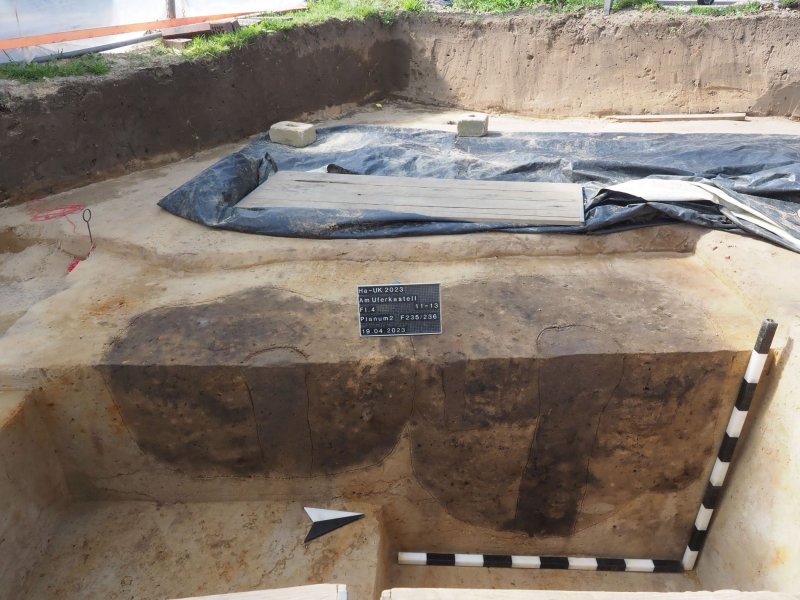The extinct giant ape, Gigantopithecus blacki, is a species of large hominoids that dominated the Pleistocene of South China. Its massive mandible, large postcanine teeth and extremely thick enamel always spark people’s curiosity about what a diet for this giant ape was. The precise diet and habitat of Gigantopithecus remains unknown so far.

Gigantopithecus blacki herd (University of Minnesota Duluth)
The only known fossils of Gigantopithecus blacki are a few teeth and mandibles found in cave sites in Southeast Asia. As the name suggests, they were larger than gorillas, standing up to 3 metres (9.8 ft) and weighing up to 540 kilograms (1,200 lb). Dating methods have shown that Gigantopithecus blacki existed for about a million years, going extinct about 100,000 years ago after having been contemporary with Homo sapiens for tens of thousands of years.

According to a press release from Chinese Academy of Sciences, researchers from Institute of Vertebrate Paleontology and Paleoanthropology and Institute of Geology and Geophysics, China, analyzed enamel stable carbon isotope values of Gigantopithecus blacki and the associated mammalian megafauna from two sites in South China, and found that this giant ape and other large mammals solely fed on C3 biomass, and lived in forest habitats.

Dr. LingXia Zhao of Institute of Vertebrate Paleontology and Paleoanthropology and her collaborators prepared and analyzed 32 tooth samples for their study. Four teeth of Gigantopithecus blacki and 24 teeth of associated large mammals were from Longgudong Cave, Jianshi, Hubei province, and the other 4 teeth of Gigantopithecus blacki were taken from Juyuandong Cave of Liucheng, Guangxi province.
It is clear that Gigantopithecus and the affiliated megafauna, such as browsers Cervus sp. and Tapirus sinensis, grazers Equus sp. and Leptobos sp. and carnivores Pachycrocuta licenti and Ursus sp., all derived their carbon from solely C3 biomass sources.
Researchers suggested that Gigantopithecus should live in closed forest habitat and not an open habitat, which is consistent with the associated faunal and floral analyses.

“Analysis of stable carbon isotopes is a powerful method for exploring the diet and habitat use of extinct herbivorous mammals, and it has been used in paleoanthropology in analysis on early hominins fossils. This method is based on the fact that the carbon isotope composition is significantly different between plants that use different photosynthetic pathways, such as C3 plants and C4 plants, and the stable carbon isotope composition of enamel is dependent on the diet components throughout the food chain”, said Dr. Zhao.

“The diet and habitat of Gigantopithecus blacki was significantly different from that of early hominins in Africa, such as Australopithecus and Paranthropus, which could consume both C3 and C4 resources and live in open habitats, although they all somehow show similar powerful mastication morphology . Dependence on forest habitat might be an important factor that made Gigantopithecus extinct when the climate and environment changed dramatically during the Pleistocene”.
Source: sci.news








